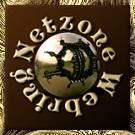![]()
Coasts
Rivers/Lakes
Lowlands/Plains
Geysers/Mud
Glaciers
Mt. Ruapehu
Mt. Cook
White Island
A Maori Legend
![]()
Abbotsford
Aramoana
Ballantynes
Brynderwyns
Cave Creek
Hawkes Bay
H.M.S. Orpheus
Influenza
Mt. Erebus
Mt. Tarawera
Rainbow Warrior
Seacliff Hospital
Tangiwai
Wahine
![]()
Annie Aves
Ata-hoe
Daisy Basham
Jean Batten
Minnie Dean
Mabel Howard
Margaret Mahy
Kath Mansfield
Kate Sheppard
Kiri Te Kanawa
Catherine Tizard
Murray Ball
Charles Goldie
Edmund Hillary
Richard Pearse
Lord Rutherford
Charles Upham
![]()
NZ FAQ--Funny
NZ Links
Credits
|
Maud Ruby Taylor was born in Victorian London on the 30th August 1879. Named to please her father, Maud was always known as Daisy, and by the time of her death on the 14th July 1963, she was known New Zealand-wide by the affectionate name of 'Aunt Daisy'. Daisy's father died soon after she was born, and when Daisy was twelve her mother took her three daughters and emigrated to New Zealand. In time Daisy qualified as a teacher; she placed high demands on herself and expected the same of everyone else. Having taken singing lessons, much of her time was spent with singing, acting, doing recitals and debating. Daisy entered into everything with the typical outgoing manner of the best extrovert. 1904 saw her marry Frederick Basham, a relationship which produced three children, Frederick, Geoffrey and Barbara. Daisy continued to make use of her fine contralto singing voice and was particularly well-known for her appearance in Handel's Messiah. Daisy always claimed that at 4' 11 1/2" tall she was the same height as Queen Victoria, and due to her short stance, audiences were often stunned by the power of her voice. In the 1920s a singing engagement in Wellington resulted in her being invited to sing Il Baccio into a horn as part of a broadcasting experiment. This was very similar to that usually found with the HMV dog. Towards the end of that decade she started writing and broadcasting programmes for 1YA Auckland. These covered the lives of composers and included songs. Then Ruby Palmer, who was responsible for the children's session, went on holiday. Daisy was asked to step in and so she gained the title of 'Aunt Daisy'. This was reinforced by an eighteen-month stint for 2YA in Wellington where she did both the children's session and arranged classical programmes.
The early 1930s saw the Depression worsening and eventually the government instructed that only men should be employed during those hard times. By 1932, both Daisy and her husband had been made redundant so they moved up to Auckland. Daisy joined a private church radio station known as 'The Friendly Road' and the following year both 'Friendly Road' and 'Aunt Daisy' transferred to 1ZB. As she was an early riser Daisy opened the station each morning, greeting the world with her cheery, "Good morning, everybody." With her ever-increasing popularity both political parties now asked her to stand for parliament -- she declined both offers. In 1936, the new Broadcasting Act came into effect and 1ZB became the first station in the new state-owned National Commercial Broadcasting Service. The confines of the day had dictated that the station was only allowed to broadcast music and religious programmes, but with new act the ban on mentioning brand names on the radio was lifted. 'Aunt Daisy' now started to talk about her favourite items and a word from her was always bound to cause a rush on any grocery product. Daisy now returned to Wellington where she worked from the head office of the new nationwide commercial network. Her radio programme now went out to the entire country. Each working day she awoke around 4.30 am, then relaxed in bed with some breakfast and a book. By 6. am she was up and finishing breakfast. Her taxi arrived at 7.30 am and half an hour later would see her in the studio settling down to work. With the curtains closed to eliminate distractions she would go through everything to come. This included recipes, letters, stories, weather, listeners hints and suggestions. At the commencement of each show the radio chimes would sound to establish the radio link, this was followed by the 'Daisy Bell' song and her traditional happy greeting. Daisy Basham worked without a script and simply sat and talked. Her non-stop patter was once recorded as being up to 120 words per minute; each word had perfect enunciation and was completely clear. During her time on air she would carefully mix paid advertisements in with recipes, letters, comments on a movie, or a short piece of verse. It was known that she would only advertise those products she approved of, a fact which gave listeners a great deal of confidence in what she said. After the show she would go to her office and prepare the next day's show, talk with advertisers and deal with any mail or phone calls. The Depression was followed by the war and 'Aunt Daisy' was sent by the government to visit those women in the army, navy and air force. As part of her contribution to the war effort she travelled to the United States of America to foster friendship between there and New Zealand. During these same years she also wrote recipe and hint pages for the Auckland Weekly News and the Radio Record (that publication later changed its name to the Listener and is still going strong). Over the years she published at least a dozen recipe-come-hint books plus yearly compilations of those pieces she used to open her radio show each day. In 1956, Daisy Basham received the MBE. Though it was a special honour, there was some sadness that her husband, who had died in 1950, could not enjoy it. 'Aunt Daisy' died in 1963 and is still remembered affectionately by many New Zealanders.
|


